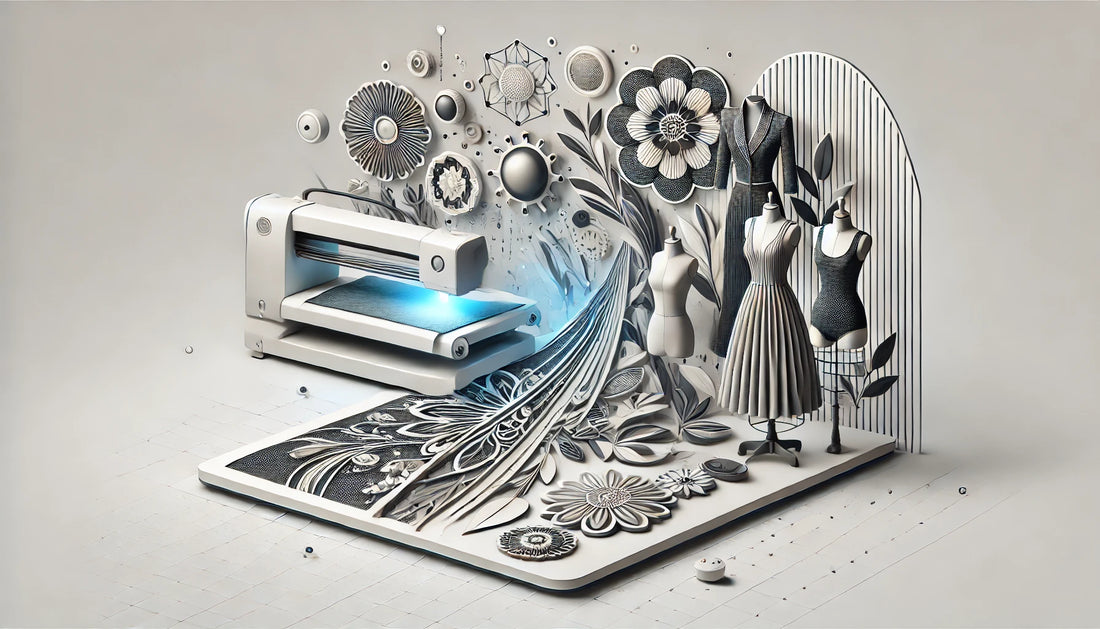
The Advantages of Laser Cutting in the Fashion Industry
Share
The fashion industry is continually evolving, with designers always seeking innovative methods to create unique and intricate designs. Laser cutting technology has emerged as a game-changer, offering precision, versatility, and efficiency. In this blog post, we'll explore the advantages of laser cutting in the fashion industry and how it can enhance your design process.
Precision and Intricacy
Detailed Designs Laser cutting allows for highly detailed and intricate patterns that are challenging to achieve with traditional cutting methods. Whether you're working with delicate fabrics or robust materials, laser cutters can execute complex designs with impeccable precision.
Consistent Quality Consistency is crucial in fashion design, especially when producing multiple pieces. Laser cutting ensures that each cut is identical, maintaining the quality and uniformity of your designs.
Versatility in Materials
Wide Range of Fabrics Laser cutting is compatible with various fabrics, including leather, silk, polyester, and lace. This versatility allows designers to experiment with different textures and materials, creating unique and innovative fashion pieces.
Non-Fraying Edges One of the significant benefits of laser cutting is that it seals the edges of synthetic fabrics, preventing fraying. This results in cleaner cuts and longer-lasting garments.
Efficiency and Speed
Faster Production Times Laser cutting significantly reduces production times compared to manual cutting methods. The speed and precision of laser cutters allow designers to complete their projects more quickly, meeting tight deadlines without compromising quality.
Reduced Waste Precision cutting minimizes material waste, making laser cutting an eco-friendly option. This efficiency is particularly beneficial when working with expensive fabrics, as it maximizes material usage and reduces costs.
Creative Possibilities
Innovative Patterns Laser cutting enables designers to create innovative patterns and textures that are impossible with traditional methods. From intricate lace-like details to bold geometric shapes, the creative possibilities are endless.
Customization Personalization is a growing trend in fashion, and laser cutting allows for easy customization. Designers can quickly adapt their designs to include monograms, logos, or unique patterns, catering to individual customer preferences.
Sustainability
Eco-Friendly Process Laser cutting is an eco-friendly process that reduces waste and energy consumption. The precision of laser cutting means less material is wasted, and the process itself uses less energy than traditional cutting methods.
Sustainable Materials Designers can use laser cutting to work with sustainable materials such as organic fabrics and recycled textiles. This aligns with the increasing demand for environmentally conscious fashion.
Real-World Applications
Fashion Design High-end fashion designers use laser cutting to create unique, avant-garde pieces. The precision and versatility of laser cutting allow for the creation of intricate patterns and textures that stand out on the runway.
Accessory Design Laser cutting isn't limited to clothing; it's also used in accessory design. Designers can create custom jewelry, belts, bags, and shoes with intricate details and personalized touches.
Home Textiles Beyond apparel, laser cutting is also used in home textiles. Designers create custom curtains, pillow covers, and other decorative items with unique patterns and designs that add a personal touch to home décor.
Conclusion
Laser cutting offers numerous advantages for the fashion industry, from precision and efficiency to creative possibilities and sustainability. By incorporating laser cutting into your design process, you can elevate your fashion creations, meet production demands, and contribute to a more sustainable industry.
Ready to explore the benefits of laser cutting in fashion? Visit Arti Cut for expert advice, high-quality materials, and professional laser cutting services in Sydney, Australia.
